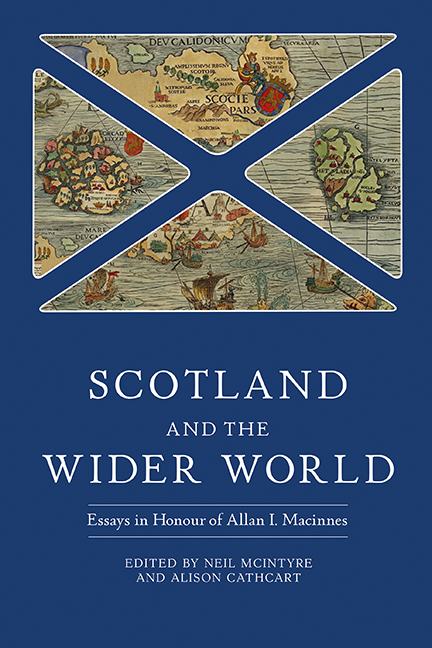Book contents
- Frontmatter
- Contents
- List of Contributors
- Preface
- List of Abbreviations
- 1 Covenants, Clans and Unions in Context: Celebrating the Scholarship of Allan I. Macinnes
- Part I Peoples and Cultures in Britain and Ireland
- Part II War, Religion and the House of Stuart
- Part III Union, Empire and Enlightenment
- List of Publications
- Index
- Tabula Gratulatoria
- Studies in Early Modern Cultural, Political and Social History
11 - Confederal Union and Empire: Placing the Albany Plan (1754) in Imperial Context
Published online by Cambridge University Press: 26 May 2022
- Frontmatter
- Contents
- List of Contributors
- Preface
- List of Abbreviations
- 1 Covenants, Clans and Unions in Context: Celebrating the Scholarship of Allan I. Macinnes
- Part I Peoples and Cultures in Britain and Ireland
- Part II War, Religion and the House of Stuart
- Part III Union, Empire and Enlightenment
- List of Publications
- Index
- Tabula Gratulatoria
- Studies in Early Modern Cultural, Political and Social History
Summary
Over the course of a remarkably creative and productive career, Allan Macinnes offers one of his most provocative and stimulating insights in the last pages of his Union and Empire. In reflecting on the Anglo-Scottish Union of 1707, Macinnes observes that ‘the fortunes of the Union have been umbilically linked to the Empire’. Consequently, ‘as the British Empire has declined in the twentieth century, Union has moved from a constitutional fixture to a constitutional option, particularly within the context of a European Community that continues to expand at the outset of the twenty-first century’. Macinnes correctly highlights the bet that some Scots made on the benefits of empire in their political calculations. If union was attractive to some Scots because of the benefits of empire, then Scotland, after decolonisation, might well now choose the European Union rather than the United Kingdom. Inspired by Macinnes, I want to shift, in this essay, away from the focus on the benefits of incorporating union to examining a moment in which empire was reimagined as confederation, a moment in which confederation was preferred by a range of politicians to the 1707 model of incorporation.
Scottish proposals for a confederal union, rather than an incorporating one, did not receive a full hearing in the first decade of the eighteenth century. But the idea of a confederal empire did not simply disappear. This imperial strategy re-emerged with a vengeance in the middle of the eighteenth century. This time the notion of a confederal empire received a full and fair hearing. Had history played out somewhat differently in the summer and autumn of 1754, the British government might well have transformed the entire constitutional basis of the empire, opting for a confederal structure.
In 1754 British imperial politicians on both sides of the Atlantic drew up remarkably sophisticated plans for confederal union. After much discussion and debate within the Board of Trade and among ministerial circles George Montagu-Dunk, second earl of Halifax, circulated his ‘Draft of a Plan or Project for a General Concert’. Less than a month earlier, Benjamin Franklin had played a key role in drafting the different, but remarkably similar, Albany Plan of Union. .
- Type
- Chapter
- Information
- Scotland and the Wider WorldEssays in Honour of Allan I. Macinnes, pp. 167 - 187Publisher: Boydell & BrewerPrint publication year: 2022

